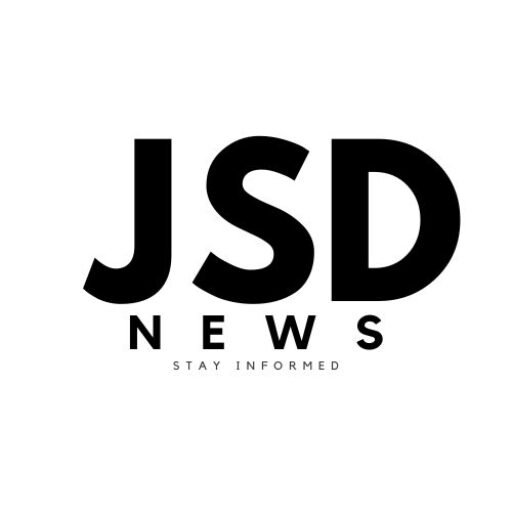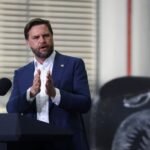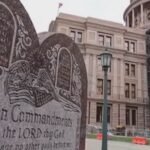By JSD MEDIA – Updated July 25, 2025
On July 24, 2025, President Donald Trump made a rare visit to the Federal Reserve’s headquarters in Washington, D.C., sparking a high‑stakes showdown with Fed Chair Jerome Powell. Critics of Powell’s leadership sharpened their attack around a controversial $2.5 billion renovation project, but by the end of the day, Trump publicly backed off firing threats—citing legal restraints and financial stability. Here’s a detailed, expert‑driven breakdown of what happened, why it matters, and how the costs and political pressure intersect.
Background: The Renovation & Political Pressure
Renovation at the Fed’s Historic Buildings
The Fed has undertaken major renovations on two 1930s‑era buildings in Washington. Originally estimated at $1.9 billion, costs have escalated to about $2.5 billion—blamed on inflation, asbestos abatement, security installations, and historic preservation Trump representatives and allies have questioned oversight, calling the project wasteful or even fraudulent
Long‑standing Friction Over Rates
Trump has repeatedly pressed Powell to cut interest rates—sometimes by several percentage points—to stimulate the economy. Powell, citing inflation risks and tariff uncertainties, has resisted steep cuts. The standoff has escalated into public insults and warnings of removal—though legally removal is only permitted “for cause” under the Federal Reserve Act
The July 24 Visit: Confrontation and Correction
A Rare Presidential Visit
Trump’s arrival marked the first time since 2006 that a sitting president toured the Fed headquarters—a symbolic break with tradition that raised alarms about encroachment on central bank independence
The Cost Dispute
On camera, Trump asserted the project had ballooned to $3.1 billion, waving documents and stating “the 2.7 is now 3.1” Powell immediately corrected him: that figure erroneously includes the Martin building, which was completed five years ago. Trump later accepted that clarification
Firing Threat, Then Reversal
When asked if the overrun constituted a fireable offense, Trump replied, “I would love to see it completed … but I just don’t think it’s necessary.” He reiterated frustration over rates but stepped back from dismissal threats, calling them unnecessary—and noted the legal and market risks
Expert & Legal Insight
Independence of the Fed
Legal precedent—including Humphrey’s Executor v. United States (1935)—makes clear that a sitting Fed chair cannot be dismissed without legitimate cause such as malfeasance, inefficiency, or neglect . Experts and former chairs like Ben Bernanke and Janet Yellen have publicly warned against politicizing Fed leadership
Markets and Credibility
Financial analysts emphasize that threats to Fed autonomy can spark investor uncertainty, possibly undermining inflation control. Trump eventually acknowledged markets’ sensitivity and the need for Fed credibility, signaling a strategic recalibration
Cost Breakdown Table
To clarify the complex figures—here’s a simplified table of variant cost estimates and key breakdowns:
| Renovation Cost Scenario | Amount (USD) | Included Components |
|---|---|---|
| Initial Estimate (2019) | $1.9 billion | Historic preservation, basic modernization |
| Current Official Estimate (2025) | $2.5 billion | Material inflation, security upgrades, asbestos cleanup, green roofs |
| Disputed Liberal Figure (Trump’s Claim) | $3.1 billion | Includes previously completed Martin building renovation |
| Powell‑Corrected Figure | $2.5 billion | Same project—Martin separate, not new |
| Projected Completion Cost (2027 estimate) | Up to ~$3.1 billion | Contingencies, delays, labor cost escalation |
Political & Economic Implications
A Tense Balance: Pressure Without Action
Trump’s rhetoric frames the Fed chair as accountable to the electorate—but ultimate action risks legal challenges and destabilizing markets. This visit reflects his shift from threats to rhetorical pressure as a mechanism to influence policy
Congressional and Institutional Response
Several Republican senators—Sen. Tim Scott, Sen. Thom Tillis—have demanded explanations for the overruns. Some are pushing legal scrutiny into the Fed’s management of the project Meanwhile, editorial boards and economists warn against politicizing monetary policy governance
Forward Outlook: Rates and Term Limits
The Fed is expected to hold rates steady in the 4.25%–4.50% range at the upcoming July 30 meeting. Trump’s term ends with Powell’s current reappointment expiring in May 2026—any replacement decision would reignite scrutiny over independence and legal authority
Why This Matters: Fed Independence vs. Executive Oversight
- Federal Reserve autonomy is a foundational element of U.S. economic policy, ensuring decisions are made free from short‑term political pressure.
- High‑profile interactions like this test the boundaries between oversight and interference.
- Markets and global investors closely watch signs of undue executive influence on monetary policy.
- Legal scholars emphasize strict limitations on removing a sitting chair without documented cause, reinforcing institutional safeguards
Trump’s July 24, 2025 Fed tour marked a watershed moment: a direct presidential visit to the Federal Reserve, public questioning of renovation oversight, verbal sparring with Powell, and yet an apparent retreat from actual dismissal threats.
The episode underscores the tension between political oversight and institutional independence. Experts and former Fed leaders caution that politicized maneuvers—even rhetorical ones—can harm credibility. Trump’s tempered conclusion—acknowledging legal limits and market fragility—reflects a strategic pullback that nevertheless leaves interest rate politics unresolved.
If interest rate cuts don’t materialize, pressure on Powell may resume ahead of May 2026. For now, markets and policymakers must navigate the tightrope between accountability and central bank autonomy.











